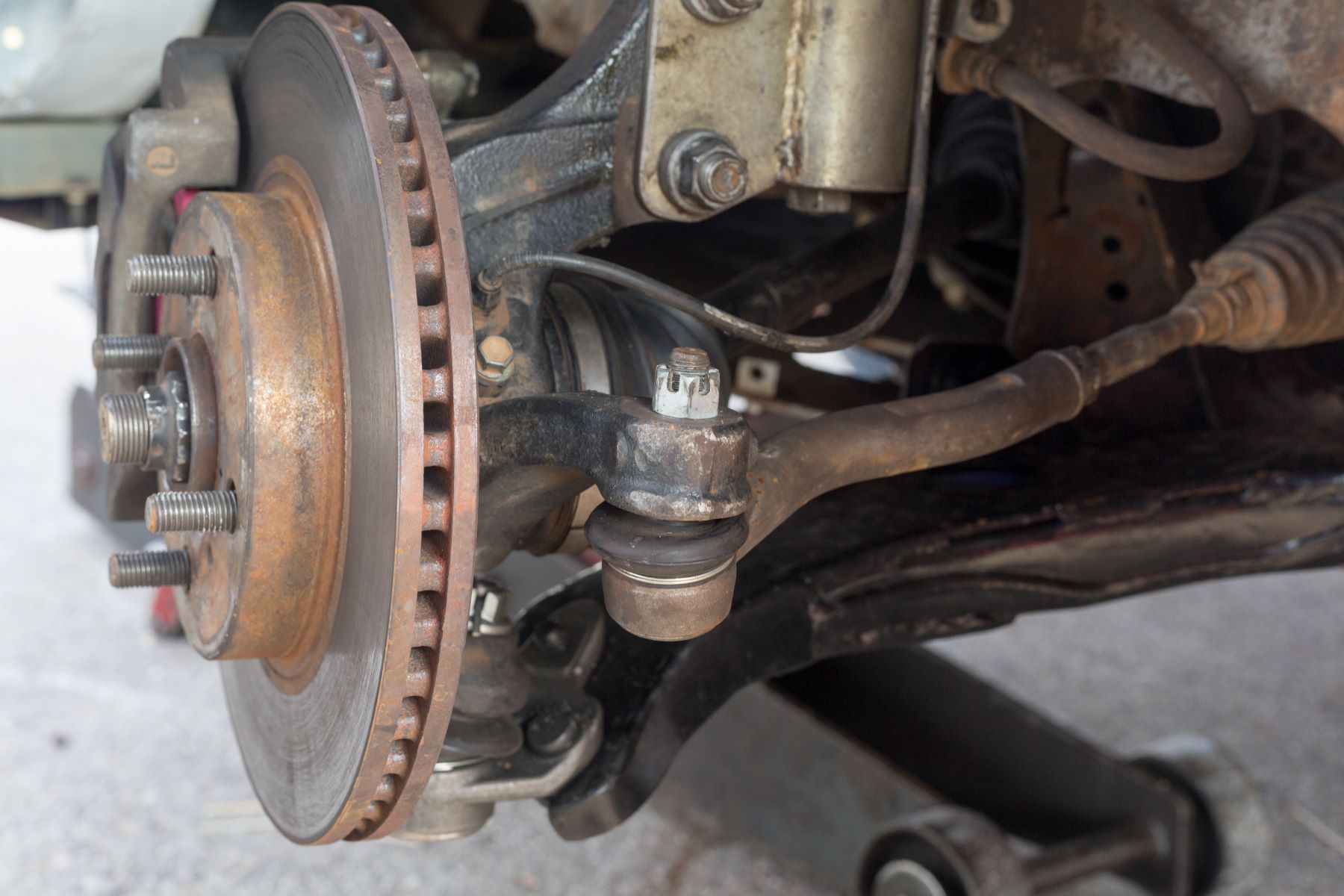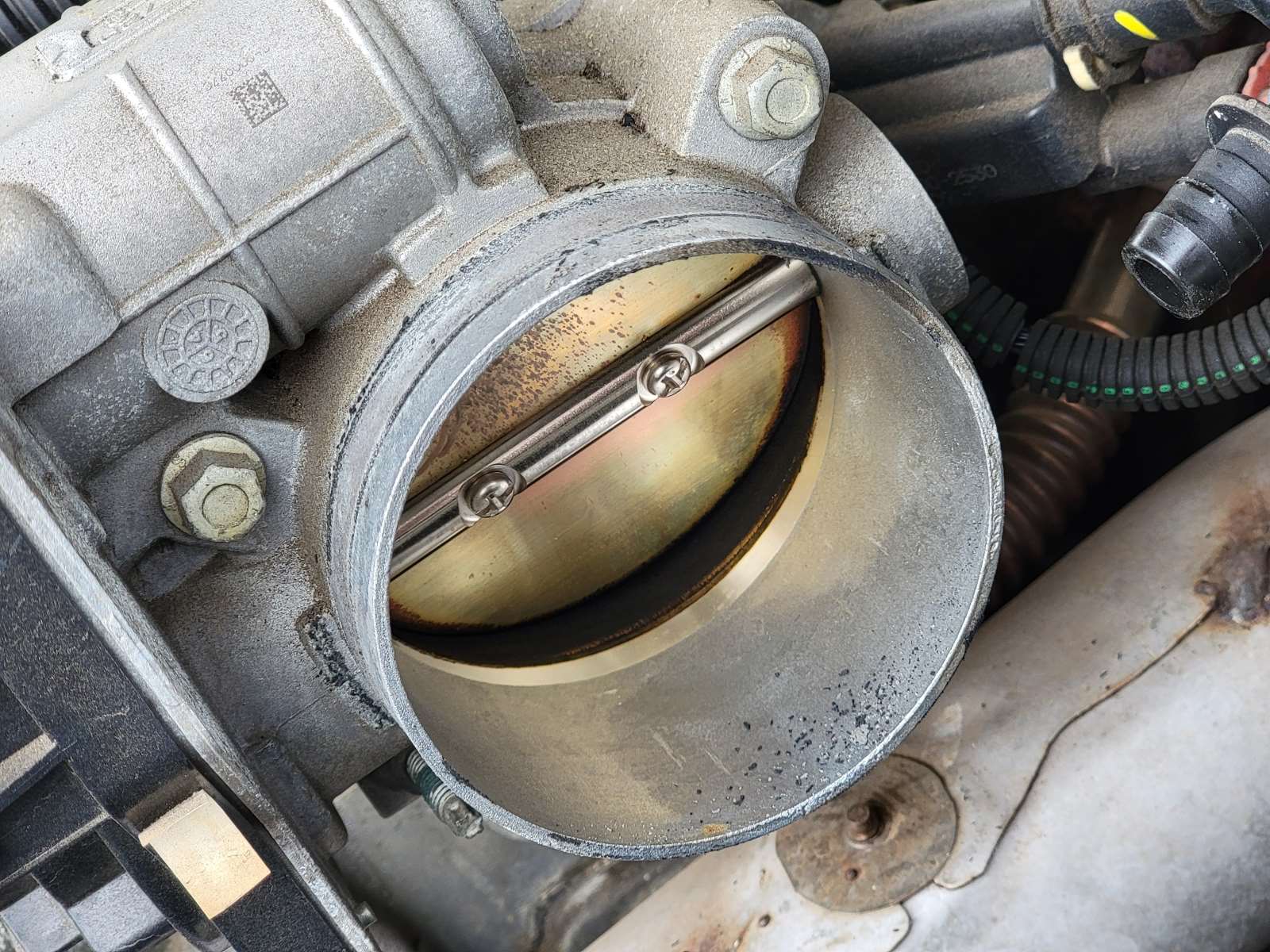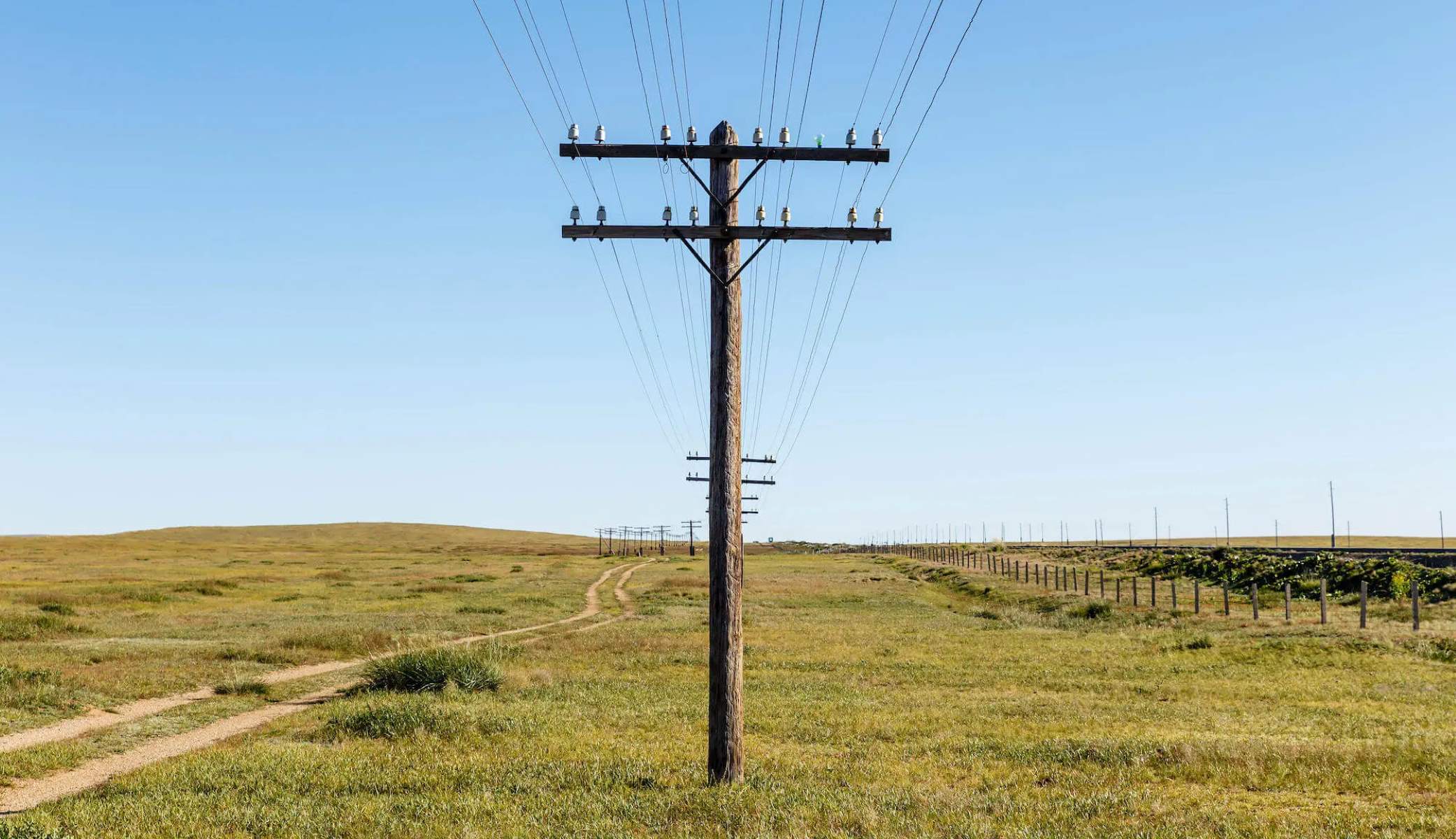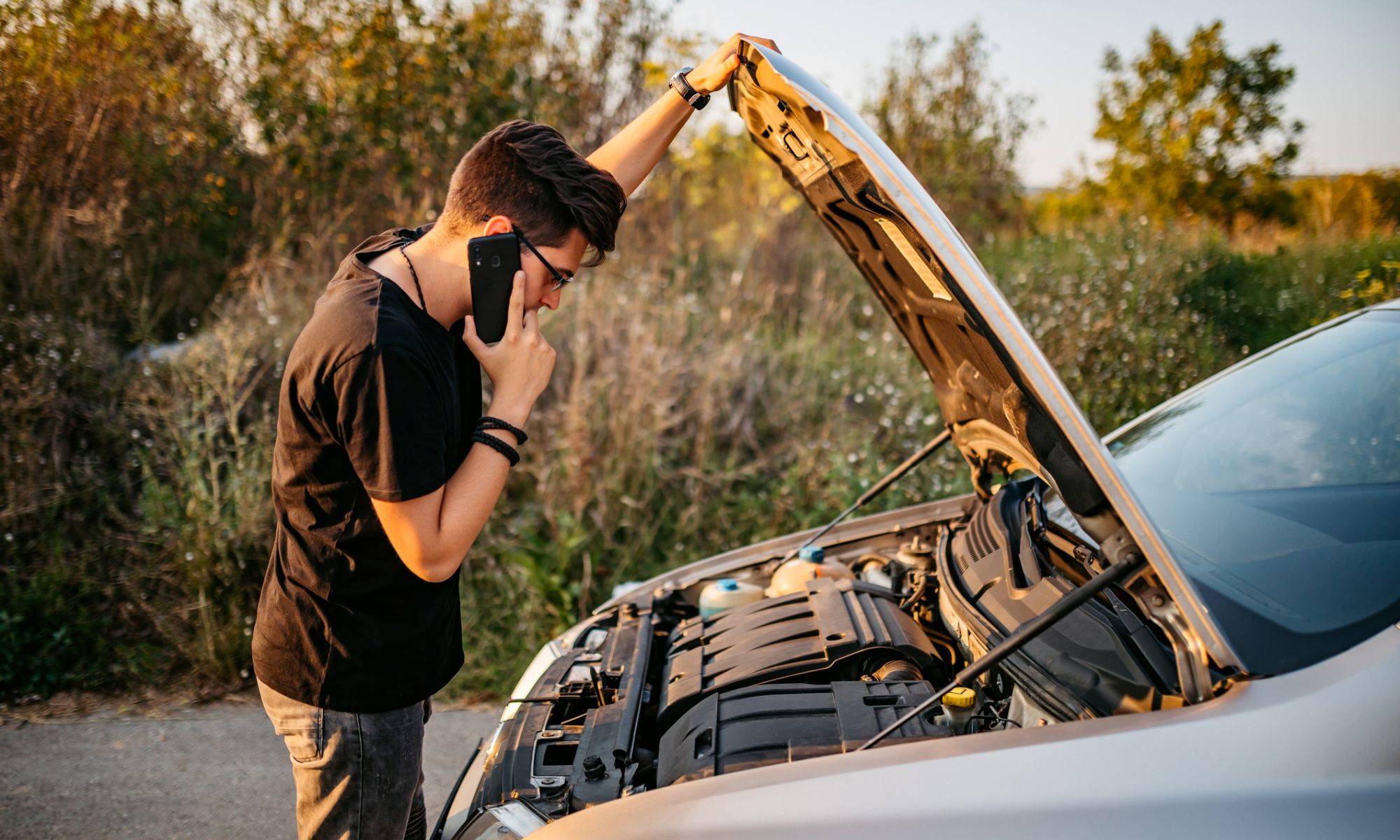Home>Automotive>The Surprising Truth About Tie Rods In Your Car’s Chassis: A Must-Know For Every Driver!


Automotive
The Surprising Truth About Tie Rods In Your Car’s Chassis: A Must-Know For Every Driver!
Published: January 14, 2024
Learn the surprising truth about tie rods in your car's chassis and why it's essential knowledge for every driver. Discover must-know automotive insights!
(Many of the links in this article redirect to a specific reviewed product. Your purchase of these products through affiliate links helps to generate commission for Regretless.com, at no extra cost. Learn more)
Table of Contents
Introduction
Welcome to the fascinating world of automotive engineering! As a driver, you're probably aware of the essential components that keep your car running smoothly. However, there's one crucial element hiding in plain sight that often goes unnoticed—the tie rods in your car's chassis. These seemingly unassuming parts play a vital role in ensuring your vehicle's stability, control, and safety on the road.
In this article, we'll delve into the surprising truth about tie rods and their significance in your car's chassis. Whether you're a seasoned car enthusiast or a novice driver, understanding the inner workings of your vehicle can empower you to make informed decisions about maintenance and repairs. So, fasten your seatbelt and get ready to uncover the mysteries behind this essential component of your car's steering system.
Stay tuned as we explore what tie rods are, their function within your car's chassis, the telltale signs of tie rod problems, the importance of regular maintenance, and practical tips for keeping your tie rods in optimal condition. By the end of this article, you'll gain a newfound appreciation for these unassuming yet indispensable parts and be better equipped to ensure the longevity and performance of your vehicle. Let's embark on this enlightening journey into the world of tie rods and unlock the secrets that every driver should know!
What are Tie Rods?
Tie rods are fundamental components of a vehicle's steering and suspension system. They are slender, cylindrical metal rods that are an integral part of the steering mechanism, connecting the steering rack or center link to the steering knuckle. This connection allows the tie rods to transmit the driver's input from the steering wheel to the wheels, enabling the vehicle to change direction smoothly and responsively.
In essence, tie rods play a pivotal role in maintaining the alignment and stability of the front wheels, ensuring that they remain parallel and move in unison. This is crucial for precise steering control and even tire wear, ultimately contributing to the overall safety and performance of the vehicle.
There are two primary types of tie rods found in most vehicles: inner tie rods and outer tie rods. The inner tie rods are connected to the steering rack, while the outer tie rods are linked to the steering knuckle. This configuration allows for the efficient transfer of steering input from the driver to the wheels, enabling the vehicle to navigate turns and corners with precision and agility.
Furthermore, tie rods are designed to withstand immense pressure and tension, as they are constantly subjected to the forces exerted during steering maneuvers and road irregularities. Their robust construction and strategic placement within the chassis make them essential for maintaining the structural integrity and functionality of the steering system.
In summary, tie rods are not merely inconspicuous metal rods hidden within the chassis; they are the unsung heroes that enable seamless steering control and stability on the road. Understanding the pivotal role of tie rods in your car's steering and suspension system is crucial for appreciating their significance in maintaining a safe and enjoyable driving experience.
The Function of Tie Rods in Your Car's Chassis
Tie rods are fundamental components of a vehicle's steering and suspension system, playing a crucial role in ensuring precise steering control, stability, and overall safety on the road. These slender, cylindrical metal rods are strategically positioned within the chassis, connecting the steering mechanism to the wheels and facilitating the transmission of steering input from the driver to the front wheels.
At the heart of their function is the pivotal role they play in maintaining the alignment and synchronization of the front wheels. When the driver turns the steering wheel, the tie rods transmit this input to the wheels, allowing them to pivot and change direction in unison. This seamless coordination is essential for navigating corners, making turns, and maintaining a straight trajectory while driving.
Moreover, tie rods contribute to the vehicle's overall stability and handling characteristics. By ensuring that the front wheels remain parallel and aligned, they help prevent erratic steering behavior and promote a smooth, controlled driving experience. This is particularly important when navigating challenging road conditions, as well as during emergency maneuvers that require quick and precise steering responses.
Additionally, tie rods play a critical role in preserving tire wear and extending the lifespan of the tires. By maintaining proper wheel alignment, they help distribute the vehicle's weight evenly across the tires, preventing uneven tread wear and ensuring optimal traction and performance. This not only enhances the driving experience but also contributes to fuel efficiency and long-term cost savings by reducing the frequency of tire replacements.
In essence, the function of tie rods in your car's chassis is multi-faceted and indispensable. From facilitating responsive steering control to preserving tire integrity and enhancing overall stability, these unassuming components are essential for the safe and efficient operation of your vehicle. Understanding and appreciating the vital role of tie rods can empower drivers to prioritize their maintenance and ensure a smooth, enjoyable driving experience for years to come.
Signs of Tie Rod Problems
Recognizing the signs of tie rod problems is crucial for maintaining the safety and performance of your vehicle. As integral components of the steering and suspension system, tie rods are prone to wear and damage over time, potentially leading to hazardous driving conditions if left unaddressed. By being vigilant for the following indicators, drivers can proactively identify tie rod issues and seek timely repairs, thereby ensuring optimal steering control and overall road safety.
1. Uneven Tire Wear: One of the most common signs of tie rod problems is uneven tire wear. When tie rods are worn or damaged, they can cause the front tires to wear unevenly, particularly on the inner or outer edges. This uneven wear pattern is a result of the compromised alignment caused by faulty tie rods, and it can significantly impact the vehicle's handling and stability.
2. Steering Instability: A noticeable symptom of tie rod issues is steering instability, characterized by excessive play or looseness in the steering wheel. If you experience a lack of responsiveness or a tendency for the steering wheel to feel loose or wobbly, it could indicate potential tie rod problems that require immediate attention.
3. Vibrations and Shaking: Damaged tie rods can lead to vibrations and shaking in the steering wheel, especially during acceleration or at higher speeds. These vibrations are often accompanied by a sense of instability and can compromise the driver's ability to maintain precise control over the vehicle.
4. Clunking or Knocking Sounds: When tie rods are worn or loose, they may produce noticeable clunking or knocking sounds when the vehicle is in motion or when steering. These auditory cues are indicative of potential tie rod issues and should not be ignored, as they can signal compromised steering integrity.
5. Off-Center Steering Wheel: A telltale sign of tie rod problems is an off-center steering wheel when driving straight. If you notice that the steering wheel is not aligned properly when the vehicle is traveling in a straight line, it could be an indication of underlying tie rod issues affecting the vehicle's alignment.
By remaining attentive to these signs of tie rod problems, drivers can take proactive measures to address potential issues and safeguard the performance and safety of their vehicles. Timely inspection and repair of tie rod problems can prevent further damage to the steering and suspension system, ensuring a smooth and secure driving experience for all road journeys.
The Importance of Maintaining Tie Rods
Ensuring the proper maintenance of tie rods is paramount for the overall safety, performance, and longevity of your vehicle. These seemingly inconspicuous components play a pivotal role in the steering and suspension system, directly impacting the vehicle's handling, stability, and tire wear. By prioritizing the regular inspection and maintenance of tie rods, drivers can mitigate potential safety risks, prevent costly repairs, and preserve the optimal functionality of their vehicles.
First and foremost, maintaining tie rods contributes to the safety of the vehicle and its occupants. As essential components of the steering system, tie rods directly influence the vehicle's ability to respond to steering inputs, navigate turns, and maintain stability on the road. By ensuring that tie rods are in optimal condition, drivers can minimize the risk of steering malfunctions and maintain precise control over their vehicles, especially during critical driving situations.
Furthermore, the maintenance of tie rods is instrumental in preserving the integrity of the vehicle's suspension and steering components. Worn or damaged tie rods can lead to misalignment issues, uneven tire wear, and compromised handling characteristics. These issues not only diminish the driving experience but also place undue stress on other critical components, potentially leading to more extensive and costly repairs in the long run.
Additionally, proactive maintenance of tie rods contributes to the longevity and performance of the vehicle's tires. Properly aligned tie rods ensure that the tires wear evenly, promoting optimal traction, handling, and fuel efficiency. By preventing premature tire wear and preserving tire integrity, well-maintained tie rods help drivers avoid the unnecessary expense and inconvenience of frequent tire replacements.
Moreover, regular maintenance of tie rods can enhance the overall driving experience by promoting smooth, responsive steering control and stability. A well-maintained steering and suspension system, including tie rods, contributes to a comfortable and enjoyable driving experience, allowing drivers to navigate various road conditions with confidence and ease.
In summary, the importance of maintaining tie rods cannot be overstated. By prioritizing the regular inspection, lubrication, and potential replacement of tie rods as part of routine vehicle maintenance, drivers can uphold the safety, performance, and longevity of their vehicles. Whether through DIY inspections or professional servicing, proactive attention to tie rods can safeguard the driving experience and ensure peace of mind for every journey.
How to Maintain Tie Rods
Maintaining tie rods is essential for preserving the safety, performance, and longevity of your vehicle's steering and suspension system. By adhering to a proactive maintenance regimen, drivers can ensure that tie rods remain in optimal condition, thereby preventing potential safety hazards and costly repairs. Here are some practical steps to effectively maintain tie rods and uphold the overall integrity of the vehicle:
-
Regular Inspections: Conducting routine visual inspections of the tie rods is a fundamental aspect of maintenance. Check for any signs of wear, damage, or looseness in the tie rod ends, as well as any abnormal movement or play in the steering linkage. Additionally, inspect the boots that protect the tie rod ends for signs of tears or damage, as these can compromise the integrity of the tie rods.
-
Lubrication: Proper lubrication of the tie rod ends is crucial for minimizing friction and wear. Applying a high-quality grease to the tie rod ends at regular intervals can help maintain smooth articulation and prevent premature wear and tear. This simple yet effective maintenance practice can significantly extend the lifespan of the tie rods and contribute to the overall functionality of the steering system.
-
Wheel Alignment Checks: Periodic wheel alignment checks are integral to ensuring that the tie rods are properly aligned and functioning optimally. Misaligned tie rods can lead to uneven tire wear, compromised handling, and diminished steering control. By addressing any alignment issues promptly, drivers can prevent unnecessary strain on the tie rods and other steering components.
-
Prompt Repairs: If any signs of tie rod wear or damage are detected during inspections, it is crucial to address these issues promptly. Whether it involves replacing worn tie rod ends, repairing damaged boots, or addressing alignment discrepancies, timely repairs can prevent further deterioration and preserve the integrity of the steering and suspension system.
-
Professional Servicing: While some maintenance tasks can be performed by drivers themselves, seeking professional servicing for comprehensive inspections and repairs is highly recommended. Trained technicians can conduct thorough assessments of the tie rods, identify any underlying issues, and perform the necessary repairs or replacements with precision and expertise.
By incorporating these maintenance practices into your vehicle care routine, you can effectively uphold the integrity of the tie rods and the overall steering and suspension system. Prioritizing the regular maintenance of tie rods not only enhances the safety and performance of your vehicle but also contributes to a smooth and enjoyable driving experience for miles to come.
Conclusion
In conclusion, the often-overlooked tie rods in your car's chassis are revealed to be indispensable components that significantly influence the safety, performance, and longevity of your vehicle. From their pivotal role in facilitating precise steering control to their impact on tire wear and overall stability, tie rods play a crucial part in ensuring a smooth and secure driving experience.
Understanding the function and importance of tie rods empowers drivers to prioritize their maintenance, thereby safeguarding the integrity of the steering and suspension system. By recognizing the signs of tie rod problems and taking proactive measures to address potential issues, drivers can mitigate safety risks and prevent costly repairs.
Furthermore, the regular maintenance of tie rods contributes to the longevity and performance of the vehicle's tires, promoting optimal traction, handling, and fuel efficiency. By preventing premature tire wear and preserving tire integrity, well-maintained tie rods help drivers avoid the unnecessary expense and inconvenience of frequent tire replacements.
By incorporating practical maintenance steps, such as regular inspections, lubrication, wheel alignment checks, and prompt repairs, drivers can effectively uphold the integrity of the tie rods and the overall steering and suspension system. Whether through DIY inspections or professional servicing, proactive attention to tie rods can safeguard the driving experience and ensure peace of mind for every journey.
In essence, the knowledge and proactive maintenance of tie rods are essential for preserving the safety, performance, and longevity of your vehicle. By embracing a proactive approach to tie rod maintenance, drivers can enjoy a smooth and enjoyable driving experience, knowing that their vehicle's essential components are well-maintained and ready for the road ahead.














